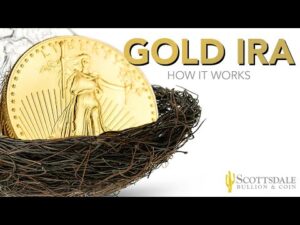
The Tokenized Asset Coalition (TAC), an organization dedicated to promoting the institutional adoption of tokenization practices for real-world assets on the blockchain, has released its State of Tokenization report. According to the report, 2023 witnessed the emergence of a tokenized risk curve, with tokenization being applied to various asset classes. The report further predicts that the adoption of tokenization will continue to grow in 2024.
Predicted Advancements in Tokenization by the Tokenized Asset Coalition
The Tokenized Asset Coalition (TAC), an advocacy group focused on bringing assets to the blockchain, anticipates significant progress in tokenization practices across different asset classes in 2024. The organization highlights these projections in its 2024 "State of Tokenization" report, which also introduces a new tokenized risk curve encompassing diverse asset classes, some of which are more prevalent in blockchain markets than others.
The report begins by discussing currency as the first asset class, emphasizing the dominance of U.S. dollar-based stablecoins and centralized stablecoins over their decentralized counterparts. However, the report predicts a surge in euro-pegged tokens and alternative stablecoins during the coming year.
According to TAC's report, the tokenization of U.S. treasuries experienced significant growth in 2023, with the total value rising from $114 million in January to $831 million in December. This represents a remarkable 600% increase, primarily driven by products offered by Franklin Templeton and Ondo Finance. Additionally, private credit platforms saw a surge of 89% in total value, increasing from $256 million to $485 million.
The report also highlights the booming digital tokenized bond experiments in 2023, with numerous organizations announcing bond issuance projects. Most of these initiatives are led by traditional financial institutions, and digital platforms supporting such activities have gained prominence in Asia and Europe.
Despite regulatory uncertainties, liquidity concerns, and infrastructure challenges, the report predicts that tokenization will continue to gain momentum in 2024. Stablecoins, private credit, tokenized treasuries, and digital bonds are expected to evolve further, contributing to the overall adoption of tokenized asset markets.
Jeremy Allaire, CEO of Circle, the stablecoin company behind USDC, recently expressed his belief that tokenization adoption will experience a significant surge. Allaire even anticipates institutions like Blackrock to offer tokenized versions of their products in the current year.
What are your thoughts on TAC's "State of Tokenization" report? Share your opinions in the comments section below.
Frequently Asked Questions
How to Open a Precious Metal IRA?
First, decide if an Individual Retirement Account is right for you. You must complete Form 8606 to open an account. For you to determine the type and eligibility for which IRA, you need Form 5204. This form must be submitted within 60 days of the account opening. You can then start investing once you have this completed. You can also choose to pay your salary directly by making a payroll deduction.
To get a Roth IRA, complete Form 8903. Otherwise, the process is identical to an ordinary IRA.
To be eligible for a precious metals IRA, you will need to meet certain requirements. The IRS says you must be 18 years old and have earned income. You cannot earn more than $110,000 annually ($220,000 if married filing jointly) in any one tax year. Contributions must be made on a regular basis. These rules apply to contributions made directly or through employer sponsorship.
A precious metals IRA can be used to invest in palladium or platinum, gold, silver, palladium or rhodium. However, physical bullion will not be available for purchase. This means you can't trade shares of stock and bonds.
Your precious metals IRA may also be used to invest in precious-metal companies. This option is offered by some IRA providers.
However, there are two significant drawbacks to investing in precious metals via an IRA. They aren't as liquid as bonds or stocks. It is therefore harder to sell them when required. Second, they are not able to generate dividends as stocks and bonds. So, you'll lose money over time rather than gain it.
Is it possible to hold a gold ETF within a Roth IRA
You may not have this option with a 401(k), however, you might want to consider other options, like an Individual retirement account (IRA).
An IRA traditional allows both employees and employers to contribute. An Employee Stock Ownership Plan (ESOP) is another way to invest in publicly traded companies.
An ESOP is a tax-saving tool because employees have a share of company stock as well as the profits that the business generates. The tax rate on money that is invested in an ESOP is lower than if it was held in the employees' hands.
A Individual Retirement Annuity (IRA), is also available. You can make regular payments to your IRA throughout your life, and you will also receive income when you retire. Contributions to IRAs don't have to be taxable
What is a Precious Metal IRA, and how can you get one?
A precious metal IRA allows you to diversify your retirement savings into gold, silver, platinum, palladium, rhodium, iridium, osmium, and other rare metals. These are called “precious” metals because they're very hard to find and very valuable. They are great investments for your money, and they can protect you from inflation or economic instability.
Precious metals are often referred to as “bullion.” Bullion refers actually to the metal.
Bullion can be purchased via a variety of channels including online sellers, large coin dealers, and grocery stores.
A precious metal IRA lets you invest in bullion direct, instead of purchasing stock. This ensures that you will receive dividends each and every year.
Precious metal IRAs do not require paperwork nor annual fees, unlike regular IRAs. Instead, you pay a small percentage tax on the gains. Plus, you can access your funds whenever you like.
Who holds the gold in a gold IRA?
The IRS considers gold owned by an individual to be “a type of money” and is subject taxation.
To take advantage of this tax-free status, you must own at least $10,000 worth of gold and have been storing it for at least five years.
Gold can be used to protect against inflation and price volatility. However, it is not a good idea to own gold if you don't intend to use it.
If you plan on selling the gold someday, you'll need to report its value, which could affect how much capital gains taxes you owe when you cash in your investments.
A financial planner or accountant should be consulted to discuss your options.
Statistics
- Instead, the economy improved, stocks rebounded, and gold plunged, losing 28 percent of its value in 2013. (aarp.org)
- This is a 15% margin that has shown no stable direction of growth but fluctuates seemingly at random. (smartasset.com)
- The price of gold jumped 131 percent from late 2007 to September 2011, when it hit a high of $1,921 an ounce, according to the World Gold Council. (aarp.org)
- You can only purchase gold bars at least 99.5% purity. (forbes.com)
- Gold is considered a collectible, and profits from a sale are taxed at a maximum rate of 28 percent. (aarp.org)
External Links
forbes.com
- Gold IRA – Add Sparkle to Your Retirement Nest Egg
- Understanding China's Evergrande Crisis – Forbes Advisor
investopedia.com
law.cornell.edu
- 7 U.S. Code SS 7 – Designation of boards of trade as contract markets
- 26 U.S. Code SS 408 – Individual retirement plans
cftc.gov
How To
The History of Gold as an Asset
From the very beginning of time, gold was a currency. It was popular because of its purity, divisibility. uniformity. scarcity and beauty. Due to its value, it was also internationally traded. There was no international standard for measuring gold at that time, so different weights and measures were used around the world. For example in England, a pound sterling equals 24 carats. In France, a livre tournois equals 25. Carats of golden. Germany had one mark which equals 28. Carats.
The United States began issuing American coin made up 90% copper, 10% zinc and 0.942 fine-gold in the 1860s. This led to a decrease of demand for foreign currencies which in turn caused their prices to rise. In this period, large amounts of gold coin were minted by the United States, which caused the gold price to drop. Because the U.S. government had too much money coming into circulation, they needed to find a way to pay off some debt. To do so, they decided to sell some of the excess gold back to Europe.
Since most European countries were not confident in the U.S. dollar they began accepting gold as payment. However, after World War I, many European countries stopped taking gold and began using paper money instead. The value of gold has significantly increased since then. Although the price of gold fluctuates today, it remains one of your most safe investments.
—————————————————————————————————————————————————————————————–
By: Sergio Goschenko
Title: Tokenization Expected to Grow in 2024, Says Tokenized Asset Coalition
Sourced From: news.bitcoin.com/tokenized-asset-coalition-expects-tokenization-to-grow-in-2024/
Published Date: Sat, 20 Jan 2024 05:30:36 +0000
Did you miss our previous article…
https://altcoinirareview.com/the-risks-of-cryptocurrencies-rbi-governor-warns-of-financial-instability/
Related posts:
 Evolution of Crypto Custodians: New Use Cases for Institutional Customers
Evolution of Crypto Custodians: New Use Cases for Institutional Customers
 Bitwise Unveils 10 Crypto Predictions for 2024: Bitcoin to Surpass $80,000, Spot Bitcoin ETFs Could Capture $72 Billion
Bitwise Unveils 10 Crypto Predictions for 2024: Bitcoin to Surpass $80,000, Spot Bitcoin ETFs Could Capture $72 Billion
 Coinbase Report Predicts Impact of 2024 Bitcoin Halving and Ethereum’s Cancun Upgrade
Coinbase Report Predicts Impact of 2024 Bitcoin Halving and Ethereum’s Cancun Upgrade
 Bitfinex Analysts Optimistic About Bitcoin and Crypto Assets as 2024 Approaches
Bitfinex Analysts Optimistic About Bitcoin and Crypto Assets as 2024 Approaches











